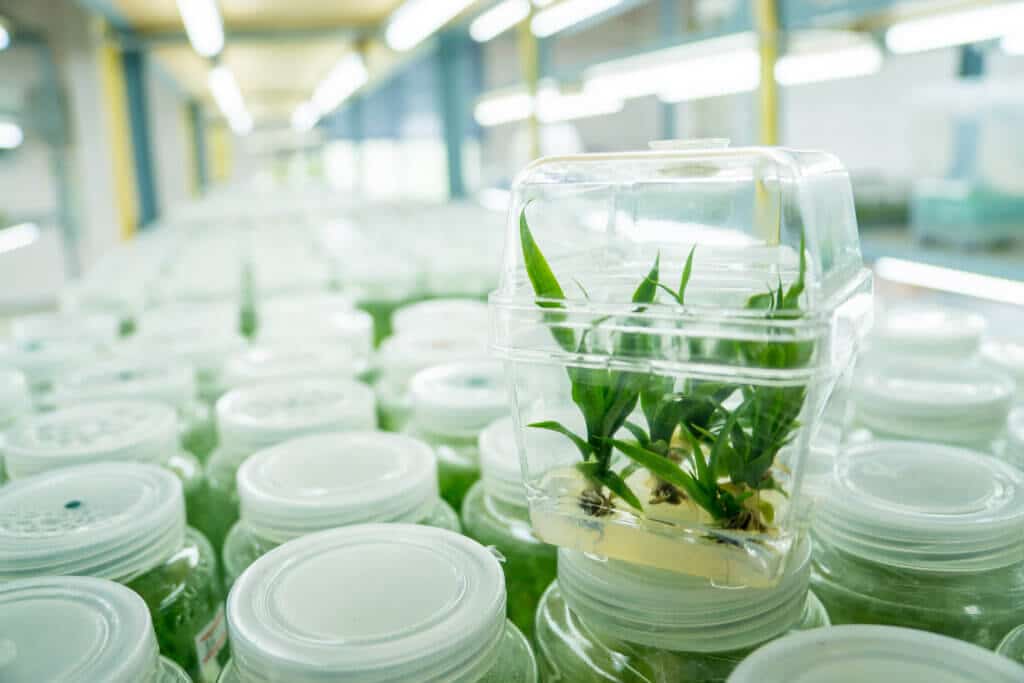Free Tropical Runtz seeds on orders over $150!
Cannabis tissue culture leans more into the scientific side of cannabis plant biology rather than the general growing side.
Since the legalization of cannabis several years ago, various breakthroughs in cultivation and reproduction have cropped up, and all of them have brought significant advancement to the cannabis world. Plant tissue culture cannabis is one of the most innovative growing techniques. It rose to prominence between the 1950s and the 1960s. For instance, orchids benefited greatly from the plant tissue culture cannabis. Plant tissue culture cannabis became popular among farmers who used it to get the biggest yields. Moreover, plants grown in cannabis tissue culture have the added benefit of being disease-free, having increased vigor, and allowing you to produce a lot more in less space. You can also use it to boost the cannabis seed germination rate of older seeds, enable polyploidization, “reset” a sick parent plant, reset the internal clock of an autoflowering plant, and more.
Plant tissue culture refers to extracting living tissue from a plant and growing that “explant” into a complete plant under ideal circumstances. Plant tissue culture cannabis may be more challenging with cannabis or hemp than other plant species. A significant number of tissue culture cuts with genetic similarities are the product of the cannabis tissue culture technique. It works flawlessly for small operations, but especially for large ones. Furthermore, the cannabis tissue culture protocol involves clonal propagation of the plant in a sterile environment. The method extracts secondary compounds from plants, most of which are cannabinoids.
Additionally, another term used in plant tissue culture is cannabis. Micropropagation is a technique for producing large numbers of new plants from fewer parent plants, resulting in cuts with consistent, predictable characteristics. Conversely, the cannabis industry misses a lot of this technique’s advantages because this species of plant is tough to micropropagate. This process has been highly successful due to the plant’s cells’ ability to regenerate into a completely new plant.
The plant tissue culture method has five distinct stages that aid in obtaining the required sample.
The charm of cannabis tissue culture is that, unlike traditional techniques, it allows cultivators to retain a living specimen almost indefinitely with minimal effort and space. Small pieces of plant tissue, even a few cells, taken from cannabis specimens can generate hundreds of identical cuts. Every tissue culture begins with a small cutting from a sample. Trim the tissue sample before entering the critical sterilization process. Once the plant tissue has been cleaned, it is placed in a dense nutrient culture, generally, an agar gel comprising a carefully crafted nutrient, hormone, and sugar mixture. The sample is under the control of the tissue culture. Different hormone combinations will cause the tiny culture to go through different phases of development.

Additionally, the culture can remain in an indeterminate purgatory state until the grower decides to work with the sample again. A cultivator can stimulate growth, root development, and multiplication by introducing new hormones and nutrient-rich growing solutions. When the crop has grown large enough to multiply, it is ready to be trimmed into hundreds of distinct but precisely cut individuals.
For various reasons, cultivating crops using cannabis tissue cultures is preferable to using seeds or cuttings. Among them are the following:
Cannabis tissue culture, despite its many attractive characteristics, has some challenges and drawbacks. Among them are the following:
Controlling the growing environment is required for tissue culture to work. You’ll get a great outcome if you keep the grow tent temperature, humidity, light intensity, light period/photoperiod, and nutrients for cannabis at the proper levels. Aim for:
Plant tissue culture cannabis is an advanced cultivation procedure that can benefit all cannabis growers who want to increase yield and harvest performance. This technique, however, is not suitable for those who do not like to wait too long before enjoying their favorite crops. There may be numerous benefits to using plant tissue culture cannabis as a planting technique. If you plan to grow your crops, sticking to what you know is safe, but it’s never a bad idea to try highly creative cannabis cultivation methods. Tissue culture cannabis is simply an alternative you can pursue if you have the opportunity.





Offers
This product is not for use by or sale to persons under the age of 18. This product should be used only as directed on the label. It should not be used if you are pregnant or nursing. Consult with a physician before use if you have a serious medical condition or use prescription medications. A doctor’s advice should be sought before using any hemp products. All trademarks and copyrights are property of their respective owners and not affiliated with nor do they endorse this product. These statements have not been evaluated by the FDA. This product is not intended to diagnose, treat, cure or prevent any disease. By using this site you agree to follow the Privacy Policy and all Terms & Conditions printed on this site. All products contain less than 0.3% Cannabinoid-compliant with applicable Federal Laws. Please make yourself aware of any and all applicable laws regarding hemp in your jurisdiction. Premium Cultivars accepts no liability or responsibility regarding germination laws in any specific locale state or national jurisdictions.THCA products are not available for shipment to the following states: Hawaii, Idaho, Minnesota, Oregon, Rhode Island, Utah, Vermont *Note: Products with Total THC content above 0.3% must not be shipped to these states.
We want to help you get your hands on the seeds you want, take 20% off your next purchase when you enter your email below!
We want to help you get your hands on the seeds you want, take 20% off your next purchase when you enter your email below!